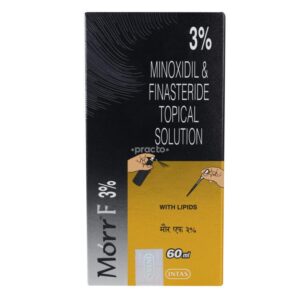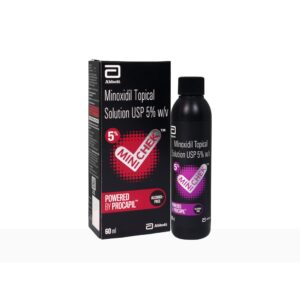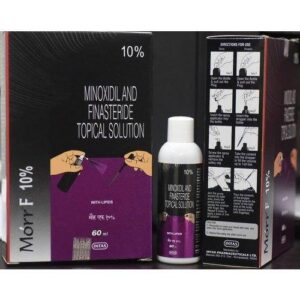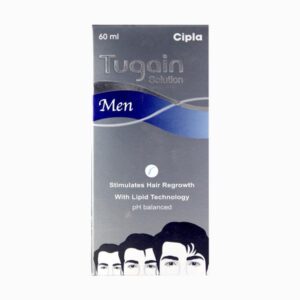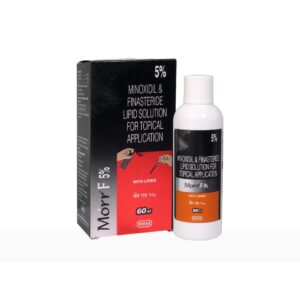MINOXIDIL + FINASTERIDE
Minoxidil: Minoxidil is a medication primarily used to treat hair loss and promote hair growth. It is available in various forms, including a topical solution or foam. Minoxidil can also be used to treat high blood pressure but is more commonly associated with its use in treating hair loss.
The exact mechanism of action of minoxidil in treating hair loss is not fully understood. However, it is believed to work by following mechanisms:
1. Vasodilation: Minoxidil causes blood vessels in the scalp to widen, promoting increased blood flow to the hair follicles. This improved blood flow delivers essential nutrients and oxygen to the hair follicles, stimulating hair growth.
2. Prolonging the Anagen Phase: Minoxidil may also lengthen the anagen phase of hair growth, which is the active growth phase of the hair follicle. This leads to longer and thicker hair strands.
The recommended dose of minoxidil for hair loss treatment in adults is usually 5% concentration applied topically twice a day. It is important to follow the instructions provided with the medication or as recommended by a healthcare professional. Results may take several months to become noticeable.
While minoxidil is generally well-tolerated, it can cause some side effects. Common side effects may include scalp irritation, itching, dryness, and redness. In some cases, minoxidil may cause unwanted hair growth on other areas of the body, such as the face. In rare instances, systemic absorption of minoxidil may lead to more severe side effects, such as low blood pressure, rapid heartbeat, and chest pain.
It is important to note that minoxidil may not be effective for all types of hair loss, and it is always recommended to consult with a healthcare professional before starting any medication.
Finasteride: Finasteride is a medication primarily used to treat symptoms of an enlarged prostate gland (benign prostatic hyperplasia) and male pattern hair loss. It belongs to a class of drugs known as 5-alpha-reductase inhibitors.
In the treatment of benign prostatic hyperplasia, finasteride helps to reduce the size of the prostate gland, relieve urinary symptoms such as frequent urination or difficulty urinating, and improve urine flow. For male pattern hair loss, finasteride helps to slow down the balding process and promote hair regrowth.
Finasteride works by inhibiting the enzyme 5-alpha-reductase, which converts testosterone to dihydrotestosterone (DHT). DHT is a hormone that contributes to the growth of the prostate gland and hair loss in men. By blocking the conversion of testosterone to DHT, finasteride helps to reduce the size of the prostate gland and prevent further hair loss.
The recommended dose of finasteride for the treatment of benign prostatic hyperplasia is 5 mg per day, usually taken as a single dose. For male pattern hair loss, the recommended dose is 1 mg per day. It is important to follow the prescribed dosage and duration recommended by your healthcare provider.
Like any medication, finasteride may cause side effects. Common side effects include decreased libido, erectile dysfunction, ejaculation disorder, breast enlargement or tenderness, and allergic reactions such as rash or swelling. Some rare but more serious side effects may include depression, testicular pain, and high-grade prostate cancer. It is important to consult with a healthcare professional if you experience any unwanted or concerning side effects.
Finasteride should not be handled or taken by women, especially if pregnant or planning to become pregnant, as it can cause harm to the fetus. It may also affect the results of prostate-specific antigen (PSA) blood tests used to detect prostate cancer, so inform your healthcare provider if you are taking finasteride before undergoing PSA testing.
Overall, finasteride is a commonly prescribed medication for the treatment of benign prostatic hyperplasia and male pattern hair loss. It is important to weigh the potential benefits and risks of finasteride treatment with your healthcare provider before starting the medication.


